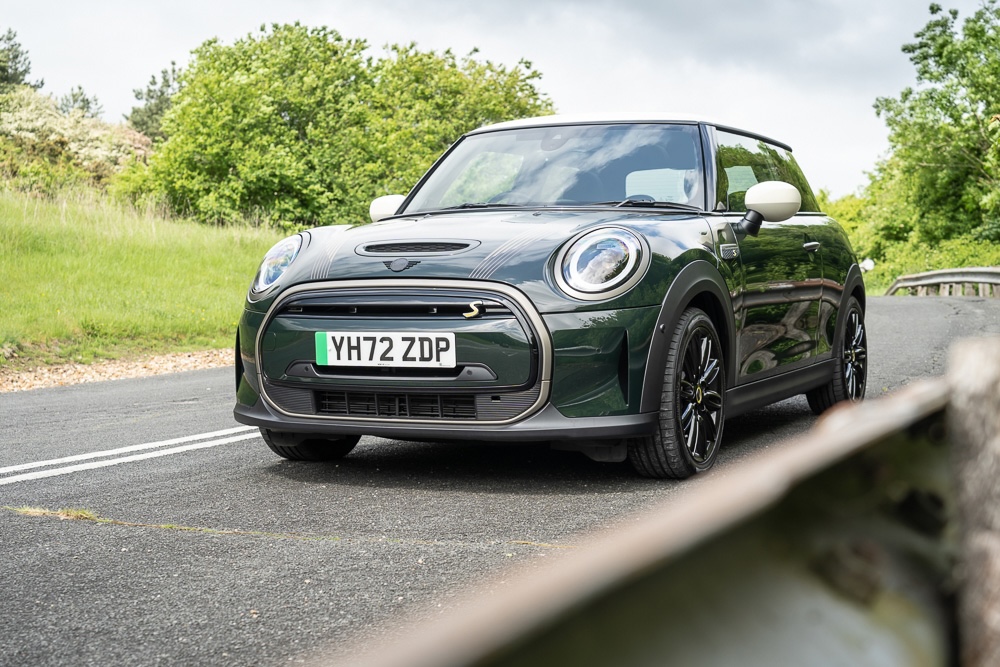Personalising your car can be an exciting and satisfying way to make it stand out on the road, but it doesn’t need to come with a hefty price tag or the risk of breaking the law. In the UK, there are several low-cost ways to customise a vehicle that remain fully legal and MOT-compliant. From number plates to simple cosmetic tweaks, there’s no shortage of methods to give your car more personality without committing to irreversible modifications or exceeding your budget.
Personalising with Number Plates: Simple and Legal
One of the most popular and budget-friendly ways to personalise a vehicle is through customised number plates. They provide a legal and eye-catching way to alter a car’s look, while still complying with DVLA regulations.
Under the BS AU 145e standard, number plates must follow clear rules relating to font, spacing, material, and reflectivity. However, this doesn’t mean personalisation is out of the question. Drivers can still include borders, select approved national identifiers (such as GB, ENG, SCO, or WAL), and make minor design choices within legal limits.
With the help of a number plate maker, it’s easy to explore options that stay fully compliant. These tools allow users to adjust plate layout, colours, and optional borders, all while staying within UK road laws. The key is to distinguish between road-legal plates, which must meet strict DVLA standards, and show plates, which are only suitable for exhibitions or private land use.
To order road-legal number plates, drivers must present original documentation, including their V5C logbook, a valid driver’s licence, and proof of address. This process helps reduce fraud and ensures only authorised users can obtain personalised registrations.
Affordable Modifications Beyond Number Plates
For car enthusiasts or casual drivers alike, there are other ways to make a vehicle feel more personal without large costs or risk of legal issues. Vinyl wraps and decals are a favourite among many UK drivers due to their flexibility and affordability. They allow for temporary changes to a vehicle’s appearance and can be removed without damaging the paintwork.
Lighting modifications offer a modern touch, provided they follow the Road Vehicles Lighting Regulations 1989. The only road-legal options are white or yellow for front lights and red for rear lights. Daytime running lights or upgraded LED side lights can give a sleek appearance, but always check regulations before installing anything that changes light colour or intensity.
Alloy wheel refurbishment can refresh a car’s exterior style without full replacements. Specialists across the UK offer repair and custom finish services at a fraction of the cost of new wheels. Refinishing can provide a brand-new look while still using the existing alloys, whether it’s gloss black or polished silver.

Avoiding Common Legal Pitfalls
While customising can be fun, it’s important to avoid modifications that may unintentionally break the law or lead to MOT failures.
Window tinting is a frequent concern. UK regulations state that front side windows must allow at least 70% light through, and windscreens must transmit at least 75% light. Tinting beyond these limits can result in fines or a failed inspection.
Improper lighting is another common issue. Underbody lighting, flashing lights, or blue headlamp bulbs are not permitted on public roads. All bulbs must be correctly aligned and emit the right colour to pass MOT tests and avoid penalties.
Noise regulations apply to exhaust systems as well. Aftermarket exhausts that increase sound levels above what a factory system would emit can breach legal limits. Removing silencers or installing systems designed for performance over compliance is strongly discouraged unless the car is used solely off-road.
Smart Styling That Maintains Resale Value
Not every modification has to be permanent, and reversible changes can be a smart route for those who plan to resell or part-exchange their car in future.
Magnetic accessories, temporary decals, and vinyl wraps are all easy to remove when it’s time to sell. Keeping original parts such as wheels, badges, and factory interiors ensures that you can restore your vehicle to stock condition quickly and inexpensively.
Recording all changes, alongside receipts and installation details, can add confidence for potential buyers. Demonstrating that your changes were carefully selected and legally compliant reassures buyers that the vehicle has been properly maintained.
Certain enhancements may even add value if done tastefully. Refurbished alloy wheels, high-quality floor mats, and steering wheel covers often appeal to used car buyers seeking clean, well-maintained interiors. Carefully chosen body kits and accessories that fit manufacturer guidelines can also attract attention.
Custom number plates provide long-term appeal since they can be retained and transferred to new vehicles. If you’ve invested in a plate representing your name or business, it can continue with you even when you change cars, offering continuity and lasting value.
Planning Ahead with Digital Tools
Digital tools have made it easier to visualise customisation before making permanent changes. Many UK drivers now turn to online platforms to test different designs in a virtual environment first.
Car configurators enable users to try different paint colours, wheels, and add-ons specific to their car model. These platforms help reduce mistakes and encourage better decisions by showing the result in advance.
Design tools for number plates also reflect current UK regulations, ensuring compliance before the plate is ordered. These live previews allow users to confirm spacing, font, colour, and layout, making it easier to stay legal while still achieving a distinctive look.
Colour-matching apps help avoid mismatches between different parts of the car. Whether it’s ensuring a wrap complements interior trims or matching accessories to factory paintwork, these tools help streamline the decision-making process.
Ready to Customise? Here’s How to Stay Compliant
Before starting your personalisation journey, take a few basic steps to ensure you stay within legal and insurance guidelines:
- Always check that changes meet MOT and DVLA regulations.
- Notify your insurer about any modifications, even minor ones.
- Retain all original parts, receipts, and documentation.
- Use approved suppliers and parts to avoid complications later.
By planning modifications carefully and sticking to permitted customisation areas, you can create a unique vehicle that stays road-legal, retains its value, and reflects your personality.
Start Personalising Without Breaking the Rules
Vehicle personalisation doesn’t need to be expensive or complicated. With so many legal, affordable options available, UK drivers have more freedom than ever to express themselves. Whether you want a subtle tweak or a standout style, the key is to work within legal boundaries while protecting your vehicle’s safety, insurance, and future value.














